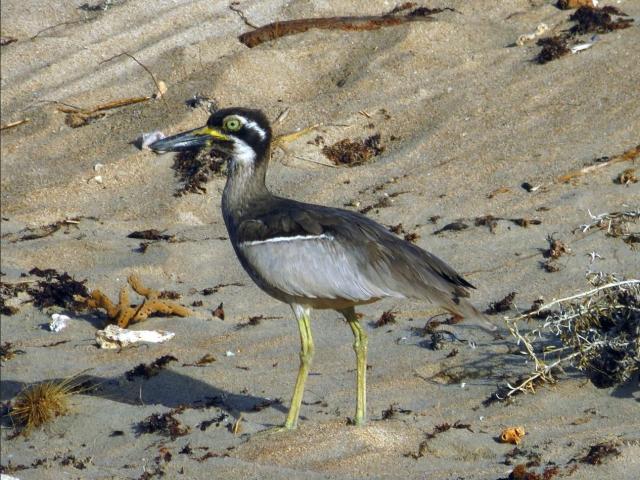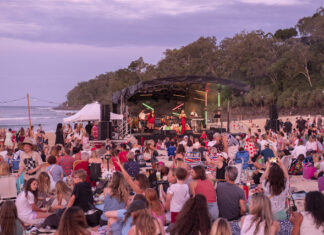Waves of winged wonders are quietly arriving on the Sunshine Coast after completing an epic journey from the Arctic.
They are exhausted and hungry and have never been more vulnerable.
Migratory shorebirds are the world’s most threatened species of birds flying more than 10,000km from Siberia and Alaska all the way to our Sunshine Coast shoreline.
These amazing birds spend most of their time feeding on the mudflats and sandbanks of the Pumicestone Passage and Maroochy River, as they need to more than double their body weight to store essential energy for their long journey back.
Environment and Liveability Portfolio Councillor Maria Suarez encouraged residents and visitors to share our coast with the shorebirds.
“We need to give these birds space to rest and recuperate,” Cr Suarez said.
“Any disturbance while feeding or resting can cause them to fly off and waste precious energy.
“Shorebirds are easily disturbed by people, dogs, vehicles and watercrafts getting too close to the birds and causing them to fly away.
“Beachgoers can help to share our coast with the shorebirds by observing from a distance using binoculars, choosing a location away from the birds for your activities, keeping dogs under control and taking rubbish home.”
The Shorebird Conservation Action Plan guided council’s contribution to the world-wide conservation efforts to protect the species.
Shorebird migration is among the most extraordinary feats of travel in the animal kingdom. Each species has its own breeding and non-breeding distribution and habitat preferences. Each has its own migration strategies, flight routes and stopover sites.
Australia is the southern destination for shorebirds using the East Asian—Australasian Flyway and a significant proportion of birds arriving here either stay in Queensland, transit through Queensland to New South Wales, Victoria or Tasmania, or travel through to New Zealand.
Four migratory shorebirds are most commonly found on the Sunshine Coast:
– The critically endangered Far Eastern Curlew is the largest of all migratory shorebirds. The brown mottled birds can easily be identified by their extremely long, downturned bill.
– Whimbrels are smaller than the Far Eastern Curlew but are a similar brown and have downturned bill. While their bill is still fairly long, it’s much shorter than the Far Eastern Curlews.
– Bar-tailed Godwits are world record holders in the longest non-stop flight. They fly directly from Alaska to Australia, sometimes non-stop for 10 days or more. They are a similar size to the Whimbrel, but with a whitish belly and a long straight or slightly upturned bill.
– The Pacific Golden Plovers are smaller than the Whimbrels and have a short black bill. They are a beautiful, mottled gold and dark brown. They have a striking black belly and face when they moult into their breeding plumage in autumn.
The Sunshine Coast is also home to resident shorebirds. Unlike their migratory counterparts, resident shorebirds don’t migrate to breed, instead they nest on our beaches and rocky headlands.
The Beach Stone-curlew, one of the coast’s resident shorebirds, is also known as beach thick-knee. It can be easily recognised by its large size and thick bill.
The Sooty Oystercatcher is one of two oystercatchers found on the Sunshine Coast. This large black resident shorebird is easy to identify with a bright red bill, red eyes and pink legs.
The Australian Pied Oystercatcher is the second oystercatcher species that lives along our shores. Like the Sooty Oystercatcher, they have a bright red bill, red eyes, and pink legs. Their plumage is strikingly black and white, making it easy to spot and identify these resident shorebirds.
Red-capped Plovers are the smallest of the resident shorebirds found on the Sunshine Coast.
Visit sunshinecoast.qld.gov.au/shorebirds for maps on the best places to view shorebirds across the Sunshine Coast.








